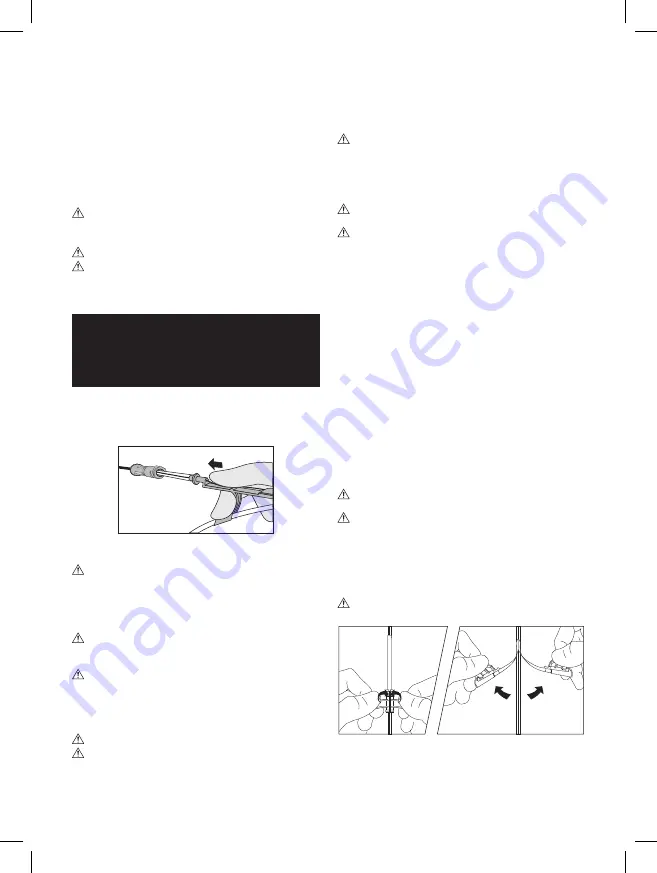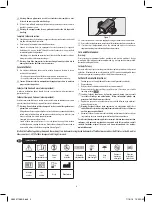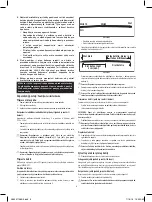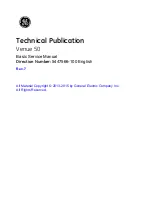
3
Gain Initial Venous Access:
12. Apply tourniquet and replace sterile gloves.
Echogenic Needle (where provided):
An echogenic needle is used to allow access to the vascular system for the introduction of a
guidewire to facilitate catheter placement. The needle tip is enhanced for approximately 1 cm
for clinician to identify exact needle tip location when puncturing the vessel under ultrasound.
Protected Needle/Safety Needle (where provided):
A protected needle/safety needle should be used in accordance with manufacturer’s
instructions for use.
13. Insert introducer needle or catheter/needle into vein.
Caution: Do not reinsert needle into introducer catheter (where provided) to
reduce risk of catheter embolus.
14. Check for pulsatile flow.
Warning: Pulsatile flow is usually an indicator of inadvertent arterial puncture.
Caution: Do not rely on blood aspirate color to indicate venous access.
Insert Guidewire:
Guidewire:
Kits/Sets are available with a variety of guidewires.
Guidewires are provided in different diameters, lengths, and
tip configurations for specific insertion techniques. Become
familiar with the guidewire(s) to be used with the specific
technique chosen before beginning the actual insertion
procedure.
Arrow Advancer (where provided):
Arrow Advancer is used to introduce guidewire into a needle.
•
Using thumb, retract guidewire tip. Place tip of Arrow Advancer – with guidewire
retracted – into introducer needle (refer to Figure 5).
Figure 5
15. Advance guidewire into introducer needle.
Warning: Do not insert stiff end of guidewire into vessel as this may result in
vessel damage.
16. Raise thumb and pull Arrow Advancer approximately 4 - 8 cm away from introducer
needle. Lower thumb onto Arrow Advancer and while maintaining a firm grip on
guidewire, push assembly into needle to further advance guidewire. Continue until
guidewire reaches desired depth.
Caution: Maintain firm grip on guidewire at all times. Keep sufficient guidewire
length exposed for handling purposes. A non-controlled guidewire can lead to
wire embolus.
Warning: Do not withdraw guidewire against needle bevel to reduce risk of
possible severing or damaging of guidewire.
17. Remove introducer needle (or catheter) while holding guidewire in place.
18. If necessary, enlarge cutaneous puncture site with cutting edge of scalpel, positioned
away from guidewire.
Warning: Do not cut guidewire to alter length.
Warning: Do not cut guidewire with scalpel.
•
Position cutting edge of scalpel away from guidewire.
•
Engage safety and/or locking feature of scalpel (where provided) when not in
use to reduce the risk of sharps injury.
Place Peel-Away Sheath:
19. Thread peel-away sheath/dilator assembly over guidewire.
20. Grasping near skin, advance sheath/dilator assembly with slight twisting motion to a
depth sufficent to enter vessel.
Note: A slight twisting motion may help sheath advancement.
Caution: Sufficient guidewire length must remain exposed at hub end of sheath
to maintain a firm grip on guidewire.
21. Check sheath placement by holding sheath in place, twisting dilator hub
counterclockwise to release dilator hub from sheath hub, withdraw guidewire and
dilator sufficiently to allow blood flow.
22. Holding sheath in place, remove guidewire and dilator as a unit.
Warning: Do not apply undue force on guidewire to reduce risk of possible
breakage.
Warning: Do not leave tissue dilator in place as an indwelling catheter. Leaving
tissue dilator in place puts patient at risk for possible vessel wall perforation.
23. Quickly place finger or thumb over sheath end upon removal of dilator and guidewire
to reduce risk of air entry.
24. Always verify entire guidewire is intact upon removal.
Advance Catheter:
25. Retract contamination guard (where provided).
Refer to ARROW VPS instructions for use for additional instructions regarding insertion using
VPS Stylet (where provided).
Insertion using Guidewire (where provided):
•
Prepare guidewire for insertion by wetting guidewire with sterile normal saline for
injection. Ensure that guidewire remains lubricious until it is inserted into patient.
•
Insert the catheter through the peel-away sheath:
•
If 80 cm guidewire is used, insert guidewire into distal lumen until soft tip of
guidewire extends beyond catheter tip. Advance guidewire/catheter as a unit
through peel-away sheath to final indwelling position, while maintaining control
of distal end of guidewire.
•
If 130 cm guidewire is used, insert soft tip of the guidewire through peel-away
sheath to desired depth. Thread catheter over guidewire and advance catheter over
guidewire to final indwelling position.
•
If resistance is met while advancing catheter, retract and/or gently flush while
advancing catheter.
Warning: Passage of guidewire into the right heart can cause dysrhythmias or
perforation of vessel, atrial or ventricular wall.
Caution: Maintain firm grip on guidewire at all times. Keep sufficient guidewire
length exposed for handling purposes. A non-controlled guidewire can lead to
guidewire embolus.
Insertion using Placement wire (where provided):
•
Insert catheter through peel-away sheath to final indwelling position.
26. Grasp tabs of peel-away sheath and pull apart, away from the catheter, while
withdrawing from vessel (refer to Figure 6) until sheath splits down its entire length.
Caution: Avoid tearing sheath at insertion site which opens surrounding tissue
creating a gap between catheter and dermis.
Figure 6
27. If catheter migrated during sheath removal, re-advance catheter to final indwelling
position.
28. Remove placement wire or guidewire. Always verify entire guidewire is intact upon
removal.
A06041108B0.indb 3
7/18/16 10:33 AM




































